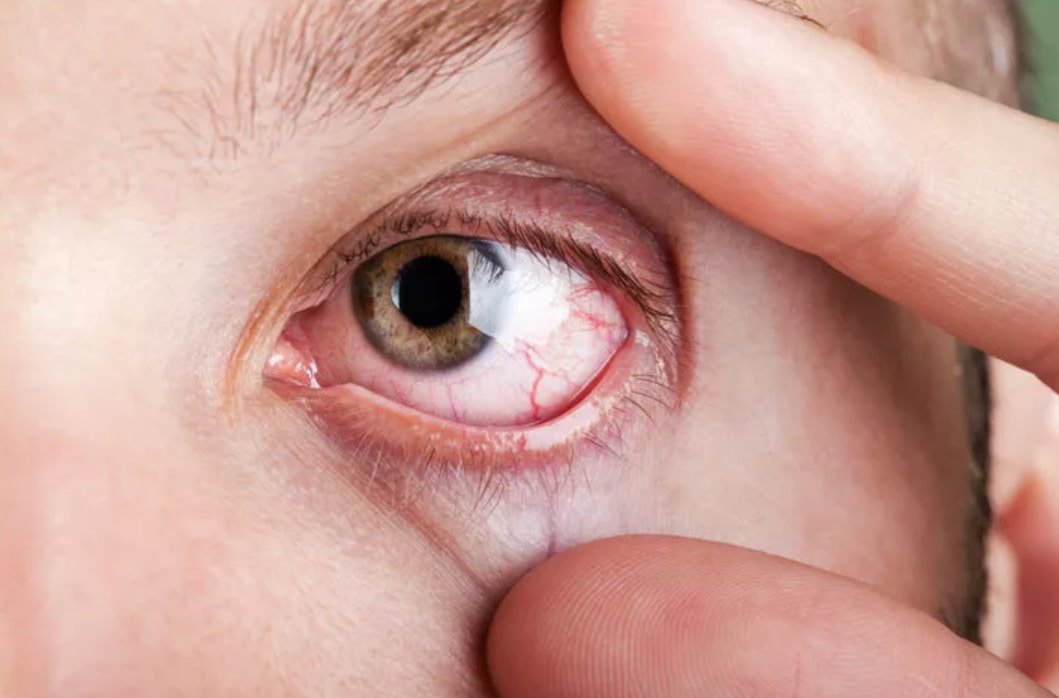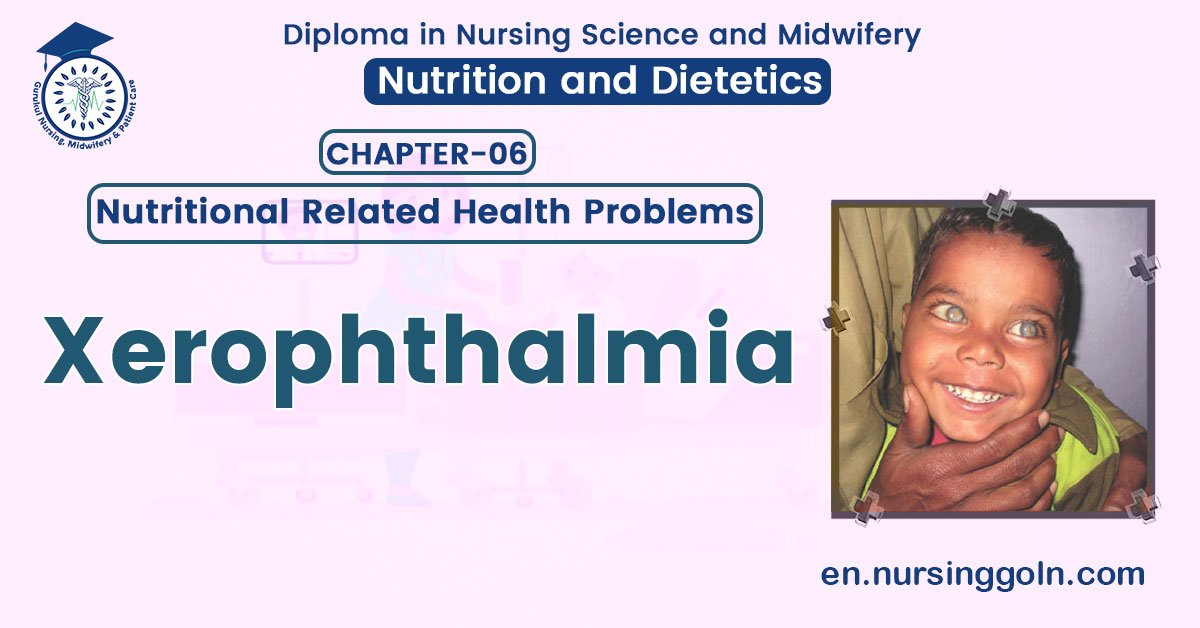Concept of Xerophthalmia – nutrition and Severe Acute Mal-Nutrition – This book covers the entire syllabus of “Nutrition and Dietetics” prescribed by BNMC-for all Diploma in Nursing Science and Midwifery students. We tried to accommodate latest information and topics. This book is examination friendly setup according to the teachers’ lectures and examination’s questions. At the end of the book previous university questions are given. We hope in touch with the book students’ knowledge will be upgraded and flourished. The unique way of presentation may make your reading of the book a pleasurable experience.
Concept of Xerophthalmia
Definition of Xerophthalmia:
Xerophthalmia is a progressive eye disease caused by vitamin A deficiency. Lack of vitamin A can dry out the tear ducts and eyes.
or
The term xerophthalmia covers all the ocular manifestations of vitamin A deficiency. Xerophthalmia can progress to irreversible blindness if left untreated

or
Xerophthalmia is a medical condition in which the eye fails to produce tears. It may be caused by vitamin A deficiency, which is sometimes used to describe that condition, although there may be other causes.
Risk factors of Xeronhthalmia:
1. Ignorance.
2. Faulty feeding practices.
3. Infection particularly diarrhea and measles.
4. PEM.
5. Faulty weanings
Ocular Changes Due to Vitamin A Deficiency:
1. Night blindness: Night blindness (nyctalopia) or inability to see in dim light is the earliest symptom of Vitamin A deficiency.
2. Conjuctival xerosis: The conjunctiva appears muddy and wrinkled, instead of looking clear and transparent. It becomes dry and unwetable. This is the first clinical sign of Vitamin A deficiency.
3. Bitot’s spots: These are triangular, pearly-white or yellowish, foamy spots on the bulbar conjunctiva on either side of the cornea. They are frequently bilateral.
4. Cornal xerosis: The corneal surface becomes dull, dry and non-wetable and eventually opaque.
5. Corneal ulceration / keratomalacia: There may be corneal ulceration with keratomalacia or liquefaction of the cornea. The cornea (a part or the whole) may become soft and may burst open.
6. Corneal scar: The corneal ulceration may heal leaving a corneal scar which can affect vision.
WHO classification –
| Classification Code | Clinical Description |
| 1. XN |
|
| 2. ΧΙΑ |
|
| 3. XIB |
|
| 4. X2 |
|
| 5. X3A |
|
| 6. X3B |
|
| 7. XS |
|
| 8. XF |
|
Pathology of Xerophthalmia:
- Vitamin A is necessary for light appreciation in the eye. The photosensitive pigments opsin and iodopsin are bound to retinal (oxidised retinol) which retains the cis-form in the dark and the trans- form in the light. The change from cis- and the trans- form releases energy and stimulates never endings. So, in vitamin A deficiency the earliest sign is impaired dark adaptation resulting in Xerophthalmia.
- Dryness of the cornea (corneal xerosis) and conjunctiva (conjunctival xerosis) is due to hyperplasia and metaplasia of the epithelium
- The Bitot’s spots are due to metaplasia of epithelium with collection of Meibomian secretion on it.
- Corneal ulceration/keratomalacia is due to necrosis of carneal substance.
Causes of Blindness:
| Main causes in developed countries: |
|
| Main causes in developing countries: |
|
Preventive Measures Of Vitamin A Deficiency Disorder:
- Periodic administration of high-doses of vitamin A (2,00000 IU) is an effective measure of controlling vitamin A deficiency.
- Adequate treatment and supplementation for mal-nutrition, diarrhea infection and, measles.
- Long term measures including nutrition education such as local sources of the vitamin A or carotenoids, production anti consumption of foods rich in vitamin A or pro-vitamin A and fortification of foods with vitamin A
- Programs to encourage breast feeding increased consumption of dark green leafy vegetables, carrot, egg, liver, fish and meal cod liver oil, small fish etc. can be provided when parents can afford.

Another Answer
Prophylaxis consists of periodic administration of Vitamin A supplements. WHO recommended schedule, which is universally recommended is as follows:
- Infants 6-12 months old and any older children weighing less than 8 kg – 100,000 IU orally every 3-6 months
- Children over 1 year and under 6 years of age – 200,000 IU orally every 6 months
- Infants less than 6 months old, who are not being breastfed – 50,000 IU orally should be given before they attain the age of 6 months
Treatment of Xerophthalmia:
A. Vitamin A supplementation should be done on day 1st, 2nd and 8th days (3 doses) according to the following dose:
| Age of the child | Dose of vitamin A |
| <6 months | 50000 IU |
| 6 months to 12 months | 100000 IU |
| >1 year | 200000 IU |
B. Treatment of underlying conditions such as PEM, diarrhea, dehydration and electrolyte imbalance and infection.
C. Antibiotic if secondary bacterial infections
D. Local treatment of eye, if disorganized

Read more:
